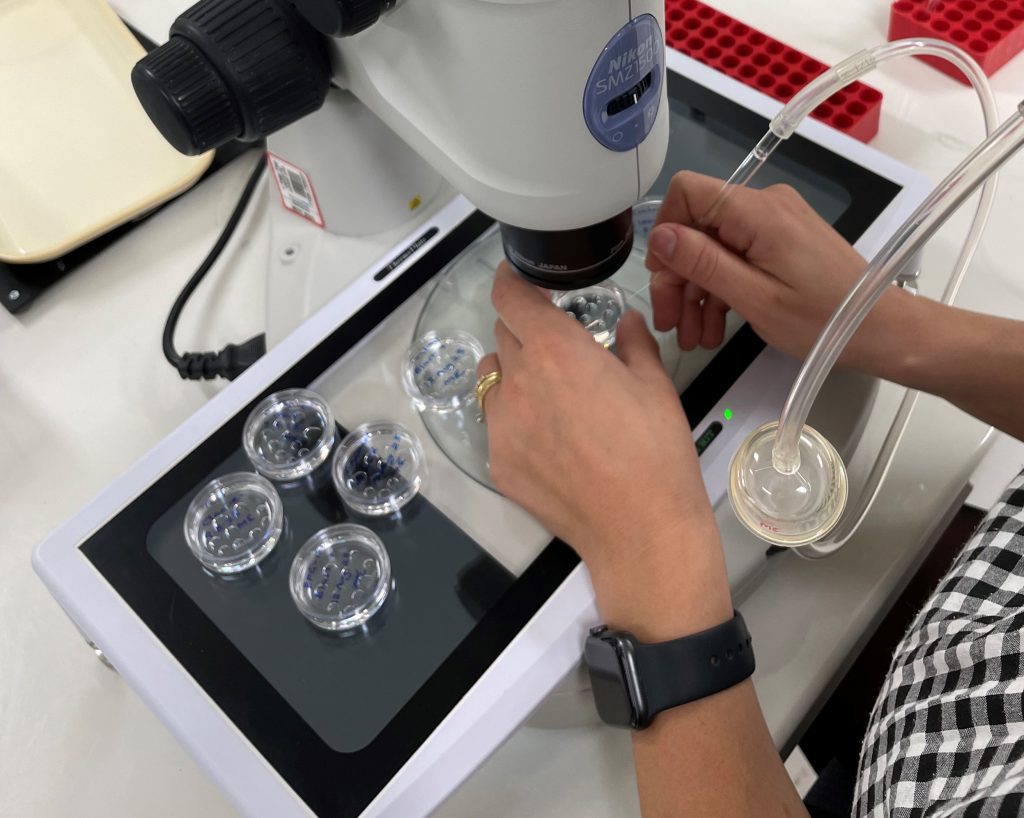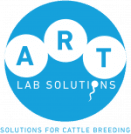
Improving and standardising in vitro fertilisation (IVF) techniques offers numerous benefits, drives innovation and enhances productivity. Standardisation ensures that IVF procedures are consistent, reliable, and reproducible across different settings, leading to uniform outcomes. This is particularly important for large-scale agricultural operations where consistency in livestock and embryo quality is essential. Enhanced IVF techniques can lead to higher success rates in embryo development and implantation, reducing wastage and increasing the efficiency of breeding programs.
Pipette Skills
There are two common techniques for pipetting gametes and embryos: using a mouth pipette or a hand pipette. In a laboratory, individuals within a lab may vary in terms of their pipetting skills. Both techniques require fine motor control, which can be improved in a fun yet constructive manner. Try spelling the initials of your name within a short timeframe with small beads, or alternatively, discarded or bad-quality embryos, using either technique, e.g., John Doe = JD. This practice helps ensure that embryos spend minimal time outside the incubator and are handled gently, ultimately improving handling efficiency and successful in vitro embryo production.
Sterile Media Preparation
Embryo quality can be significantly affected by the preparation of culture media. Preparing culture media in a non-sterile environment increases the risk of contamination, including bacterial or fungal growth, especially given the long culture duration in nutrient-rich media within a humidified incubator environment. To prevent contamination, always prepare media in a laminar flow hood or a biological safety cabinet. These environments safeguard samples from contaminants. Additionally, standard sterile techniques are crucial. Avoid crossing over any culture dishes without a lid, blocking airflow from the hood, or putting your hand into a packet of culture dishes to take one out. These actions can introduce contaminants into the culture media, negatively impacting the success rate of embryo production.
Aliquot Preparation
Aliquot preparation is crucial for accuracy and reproducibility in embryo production. An aliquot is a smaller sample taken from a larger volume to ensure consistent experimental/culture conditions. These aliquots can be for either semen preparation, hormones, or serum for culture. Key steps include mixing the primary sample to ensure homogeneity, using aseptic techniques and a calibrated pipette for accurate transfer, and labelling containers to prevent contamination. Further, proper storage, such as using cryovials for freezing or maintaining sterile conditions, preserves aliquot integrity. Detailed documentation of each aliquot’s source, volume, concentration, and preparation date ensures traceability. Following strict aliquot preparation protocols enhances the reliability and robustness of the prepared aliquots.
